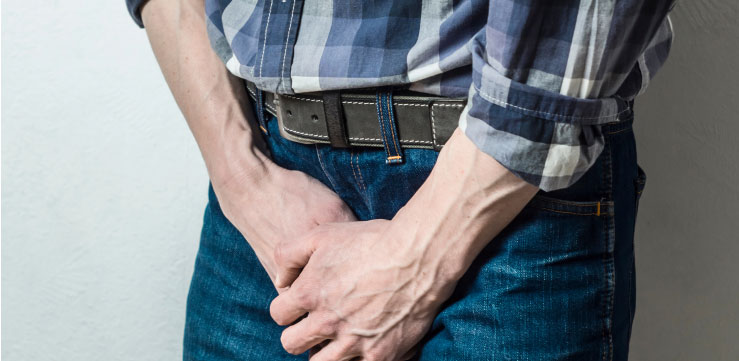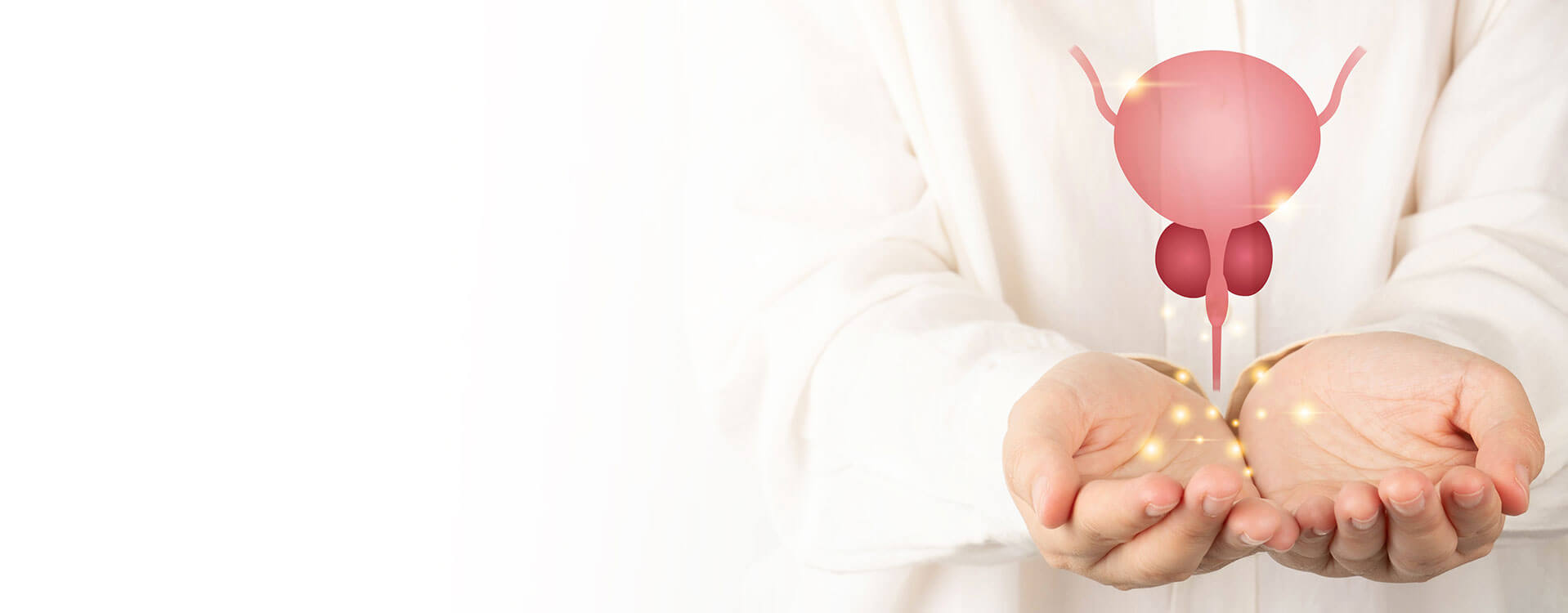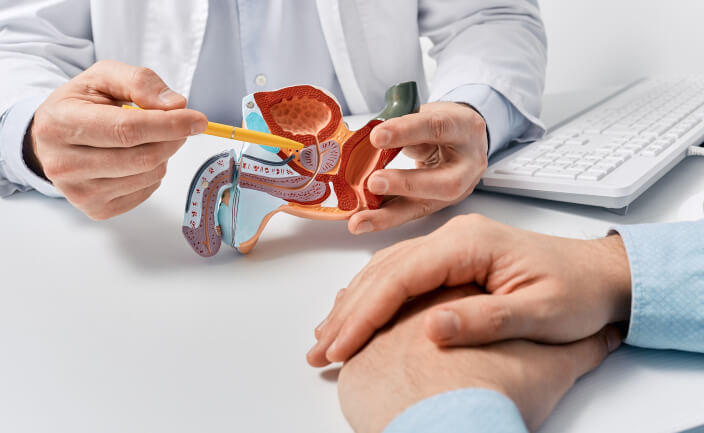What Is An Enlarged Prostate?
Prostate enlargement, technically known as benign prostatic hyperplasia (BPH), is a normal part of the ageing process in most men. As the name suggests, BPH is benign; it is not cancer and does not raise your risk of prostate cancer.
Why Do Prostates Enlarge With Age?
It isn't yet clear why the prostate enlarges as men get older, but it may have to do with the changes in hormones associated with age.

What are the Symptoms of an Enlarged Prostate?
As the prostate is located under the bladder and surrounds the urethra. Depending on the degree of obstruction, BPH (Enlarged Prostate) may compress the urethra and lead to a variety of urinary symptoms:
- Weak or intermittent urine stream
- A feeling of incomplete emptying
- Frequent urinating
- Sudden urges to urinate
- Frequently waking at night to urinate
Consult a urologist for relief of these discomforts.

What Can Be Done for an Enlarged Prostate?
Diagnosis
Before any treatment is recommended, different tests are conducted to confirm if an enlarged prostate is responsible for your urinary symptoms as opposed to another cause such as infection or bladder/prostate cancer. These tests also allow us to assess the severity of the problem to help direct the most appropriate treatment. This may include:
- A questionnaire to assess your symptoms (IPSS score)
- A diary to record your fluid intake and urine output
- Urine tests to rule out any infection
- PSA blood test to check for prostate cancer
- Blood test to check kidney function
- Urine flow test and postvoid residual measurement
- Ultrasound imaging of the prostate, bladder and kidneys
In some cases, a cystoscopy may be recommended to examine the prostate and bladder directly, to rule out other potential causes for your symptoms.
Timely treatment can save you from further discomfort.
What are the Treatment Options for Enlarged Prostate (BPH)?
If your symptoms are mild and there are no complications, lifestyle adjustments may be sufficient to address an enlarged prostate. Otherwise, medications or surgical procedures may be required.
How You Can Manage BPH
For men with mild symptoms, your doctor may recommend the following lifestyle changes:
- Engage in exercises to strengthen pelvic floor muscles and improve urinary control.
- Limit fluid intake, especially before going out or before bedtime.
- Reduce intake of coffee, tea and alcohol
Medications
For men with more significant symptoms, doctors may prescribe medication. There are two main types of medication:
- Alpha-blockers: Medications that quickly relax the muscles around the prostate and bladder neck, relieving the obstruction.
- 5-alpha reductase inhibitors (5-ARIs): Medications that inhibit prostate growth and induces its shrinkage. They take longer to work (six months to a year) but can be combined with alpha-blockers for faster relief. 5-ARIs are also prescribed for male pattern baldness and have the potential to promote hair growth.
Minimally Invasive Surgical Treatments (MIST)
There are three types of MIST that can effectively relieve symptoms of an enlarged prostate while preserving sexual function. Most men see improvement in their symptoms within a few weeks and return to regular activities within a few days after the treatment.
The procedure is typically performed as a day surgery, taking approximately 5-10 minutes to complete under local anaesthesia and sedation. Following the procedure, symptoms are quickly resolved, and patients can typically resume their normal activities by the next day.
Surgical Procedures
If your prostate is too large or if you are affected by complications such as urinary retention, bladder stones, or blocked kidneys, you may require surgery instead.
is Our Priority

Location
6 Napier Road #05-03,
Gleneagles Medical Centre,
258499, Singapore
Contact Us
| Phone |
: +65 6732 6503 |
| : info@tanurology.com.sg |
